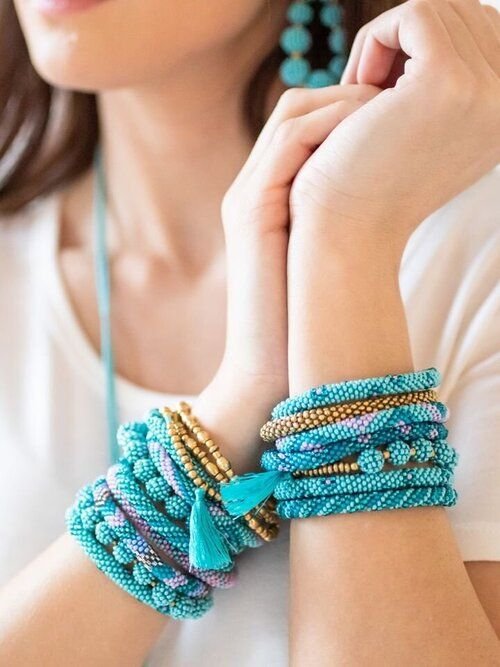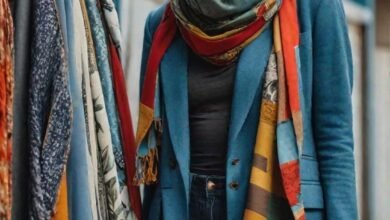Eco-Friendly Fashion Accessories: 10 Sustainable Ways to Enhance Your Style

Introduction
Fashion has always been a medium of self-expression, enabling individuals to showcase their personality, creativity, and values. In today’s world, where environmental consciousness is more critical than ever, the fashion industry is undergoing a significant transformation. Consumers are increasingly seeking ways to align their personal style with sustainable practices. While much focus has been on sustainable clothing, accessories are equally vital in building a wardrobe that reflects a commitment to ethical and eco-friendly principles.
Fashion accessories, including bags, shoes, belts, jewelry, and scarves, often rely on materials and production processes that harm the environment. From the extraction of raw materials to manufacturing and transportation, the carbon footprint of accessories is substantial. However, the good news is that numerous innovative brands and individuals are redefining the accessory market by creating beautiful, durable, and sustainable options.
This article explores the significance of sustainable fashion accessories, provides ten practical ways to incorporate eco-friendly accessories into your wardrobe, and highlights how these choices can make a difference. Together, we can embrace fashion as a force for good, combining style with sustainability to create a more conscientious future for the planet.
1. Opt for Accessories Made from Recycled Materials
Recycled materials are a cornerstone of sustainable fashion. Many brands now create accessories like bags, jewelry, and watches from discarded materials, including plastics, metals, and fabrics. These items reduce waste and give new life to materials that would otherwise end up in landfills. For example, handbags crafted from recycled ocean plastics or jewelry made from upcycled metals are stylish and environmentally friendly.
By choosing recycled accessories, you actively contribute to reducing demand for virgin resources and supporting a circular economy. These products are often as durable and fashionable as their traditional counterparts but carry a unique story of transformation.
2. Invest in Timeless and Versatile Pieces
One of the best ways to embrace sustainability in fashion is to adopt a minimalist approach. Accessories that are timeless and versatile can be paired with multiple outfits, reducing the need for excessive purchases. Items like classic leather belts, neutral-toned scarves, or simple gold or silver jewelry never go out of style and can adapt to various trends over the years.
When shopping for accessories, think long-term. Consider quality, durability, and whether the item complements the majority of your wardrobe. Investing in timeless pieces reduces waste and helps you build a sustainable, functional collection.
3. Support Ethical and Fair-Trade Brands
Many sustainable accessory brands prioritize ethical labor practices, ensuring their workers are paid fairly and operate in safe conditions. These brands often source materials responsibly and focus on reducing their environmental footprint. Purchasing from fair-trade-certified companies guarantees that your accessories are produced under humane and environmentally conscious standards.
Examples include jewelry handmade by artisans in developing countries or handbags crafted by cooperatives that empower local communities. Supporting such brands ensures that your fashion choices contribute positively to society.
4. Choose Vegan and Cruelty-Free Options
Leather, fur, and other animal-derived materials are traditional staples in accessories but have significant ethical and environmental consequences. Vegan alternatives, such as faux leather made from apple skins, pineapple fibers (Piñatex), or mushroom leather, offer cruelty-free options that rival the look and feel of genuine leather.
Brands focusing on plant-based or synthetic alternatives are paving the way for innovative and sustainable accessories. These options reduce harm to animals and have a smaller environmental footprint than traditional livestock farming.
5. Upcycle or DIY Your Accessories
Upcycling is a creative and sustainable way to refresh your wardrobe. Instead of discarding old accessories, consider how they can be repurposed or transformed. For example, an outdated necklace can be reimagined into a bracelet, or a worn-out handbag can be converted into a stylish clutch.
DIY projects allow you to customize your accessories while reducing waste. Crafting your jewelry or embellishing old scarves can be a rewarding activity that combines sustainability with personal creativity.
6. Look for Biodegradable Materials
Accessories made from biodegradable materials, such as cork, jute, bamboo, or organic cotton, decompose naturally without harming the environment. These materials are renewable, lightweight, and versatile, making them ideal for creating stylish and eco-friendly accessories.
For instance, cork handbags are durable and water-resistant, while bamboo sunglasses are both chic and sustainable. Choosing biodegradable options ensures that your accessories leave no lasting negative impact on the planet.
7. Rent or Borrow Accessories for Special Occasions
For events like weddings, galas, or other formal gatherings, renting or borrowing accessories is an excellent alternative to purchasing items you may only use once. Many platforms now offer rental services for luxury handbags, jewelry, and other accessories, allowing you to enjoy high-end fashion without the environmental cost.
Borrowing from friends or family is another practical way to access unique pieces while reducing consumption. This approach promotes sharing and community, aligning with sustainable values.
8. Prioritize Local and Artisanal Craftsmanship
Supporting local artisans and small businesses is another impactful way to embrace sustainable accessories. Handmade items often use fewer resources during production and celebrate traditional craftsmanship. Additionally, purchasing locally reduces the carbon footprint associated with shipping and packaging.
Accessories like handcrafted jewelry, handwoven scarves, or custom-made belts not only enhance your style but also preserve cultural heritage and support small-scale economies.
9. Repair and Maintain Accessories
Proper care and maintenance can significantly extend the life of your accessories. For example, polishing your jewelry, repairing handbags, or replacing watch straps ensures that these items remain functional and stylish for years.
When an accessory shows signs of wear, consider professional repair services rather than discarding it. Many brands now offer repair programs to encourage consumers to prolong the lifespan of their products, reducing waste and fostering sustainable consumption habits.
10. Educate Yourself and Advocate for Sustainability
Lastly, staying informed about sustainable fashion and sharing your knowledge with others can have a ripple effect. Follow eco-conscious brands, read about sustainable materials, and learn about the environmental and social impact of the fashion industry.
Advocating for sustainability through social media, conversations, or community events can inspire others to make more mindful choices. The collective impact of individuals prioritizing sustainable accessories can drive significant change within the industry.
Conclusion
Sustainable fashion accessories are more than just a trend—they represent a commitment to protecting the planet and promoting ethical practices within the fashion industry. By making conscious choices, such as investing in timeless pieces, supporting fair-trade brands, and embracing upcycling, consumers can enjoy stylish, functional accessories without compromising their values.
The journey toward sustainable fashion begins with small, intentional steps. Each accessory you choose has the power to tell a story—one of creativity, innovation, and responsibility. Together, we can redefine what it means to accessorize, creating a future where style and sustainability coexist harmoniously.





